Marie-Victoire de Bascher is a Paris-based artist and designer whose sensibility was shaped by a colourful, creatively charged childhood that nurtured an early fascination with artistic narratives—a world of form, symbolism, and the humour hidden in objects. From this foundation emerged her eponymous studio, founded in 2019 in Le Marais—a space where fashion, art, and interior design converge into something distinctly MV. At its core lies a philosophy of storytelling in design, where each creation carries a whisper of narrative and emotion beneath its crafted surface.
Her collaborations span the most current names in the luxury fashion scene: eyewear for Jacquemus and Pucci, jewellery for Lemaire, graphic direction for Hermès leather goods, and the dreamlike campaign for Diptyque’s L’Eau des Hespérides. Marie Victoire de Bascher’s work is a study in precision and play—where humour meets craftsmanship and fantasy meets form. Each piece stands as a quiet rebellion against rigidity, a reminder that design, at its best, is meant to be lived and enjoyed.
hube: You’ve designed eyewear for both Pucci and Jacquemus—two houses steeped in a spirit of joy and play. Does that sense of joie de vivre naturally live within your own aesthetic, or do you sometimes find yourself resisting it in search of a different mood?
Marie-Victoire de Bascher: I grew up watching the fun, sparkly runways of the ’90s, which gave me an appetite to combine work and play—my ethos emerged from this. But I have learnt to nuance my vibrant impulses and found pleasure in coding my DNA in details—a silly function, a cheeky name, secret encryptions. Humour is vital to my work. I can’t resist it.
h: You carry a rich Parisian fashion lineage—your uncle Jacques de Bascher, your cousin and former collaborator Théophile. Does heritage inspire or weigh on you? How do conversations about art and design unfold within a family so steeped in aesthetics?
MVB: I grew up in the countryside, far from the Parisian scene, but I come from a family of storytellers. They passed down memories in the shape of tales and myths, including a lot about my uncle’s extravaganzas, so his heritage really came in the shape of legends.
Working in fashion, I regularly meet a few people who knew him in the ’80s. When introduced, I always get the same reactions: it’s either a good scandalous gossip or some very judgemental eyebrows. But it’s really a small hassle, and I scarcely give my full name anyway (I mean, it’s long enough as it is!). Creatively, exploring the contrasts and similarities in our heritage is what brought Theo and me together. Our shared practice of design sparked an ongoing conversation centred on family games; we debuted our collaboration in 2024 with a massive backgammon table and are working on a chess salon for 2026. It’s a clash of aesthetics with a mutual taste for experimentation.
h: What first seduced you into the world of fashion and design? And if you could redraw the trajectory of your career, would you?
MVB: I remember vividly discovering a puzzle game—16 animali from Enzo Mari—at my grandparents’ and being amazed by the clever shapes and the weight of the pieces. I think it was the first time the beauty and ingenuity of a design really struck me. I wished I had designed it instantly. As for fashion, I was born with the mind of a magpie; everything shiny I find irresistible. Christian Lacroix haute couture, Versace and Jean Paul Gaultier in the ’90s were catnip to me; doing something in fashion was evident from a very young age. But fashion jewellery I really discovered during my first internship at Louis Vuitton under Marc Jacobs, where Camille Miceli was doing the most extravagant collage parures. I found my creative balance making connections between these seemingly very partitioned industries. I could not imagine my identity today without having explored these two passions.
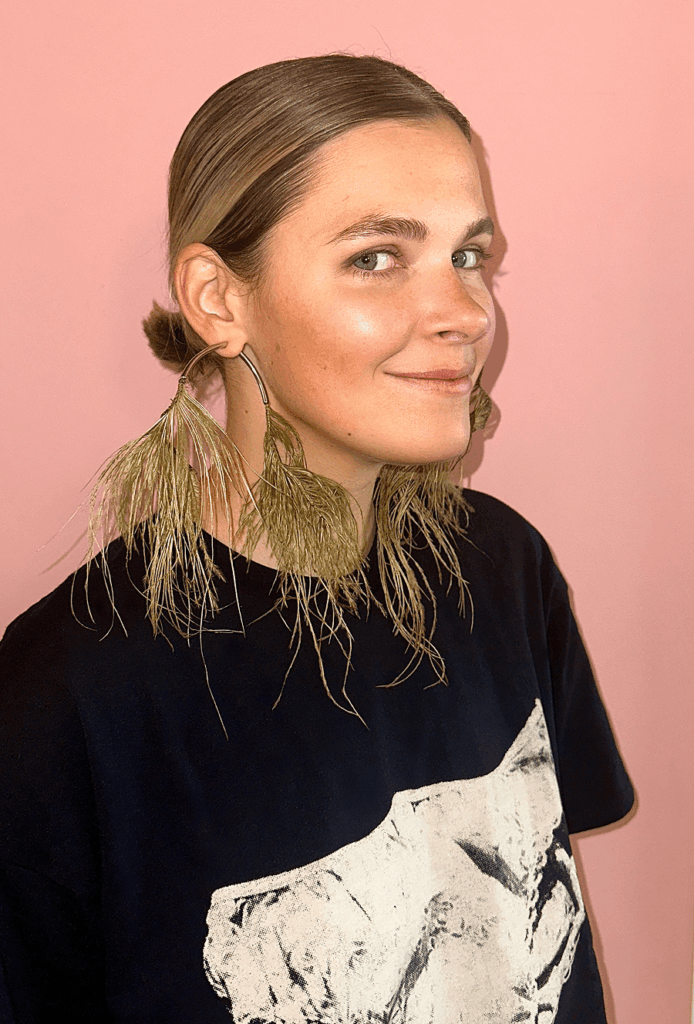

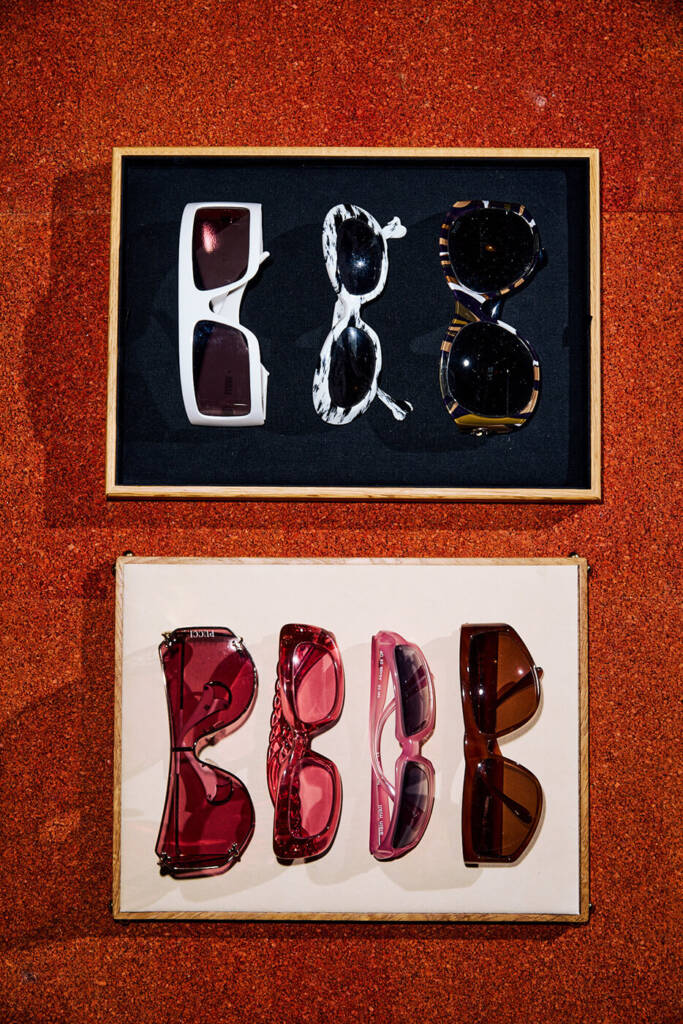
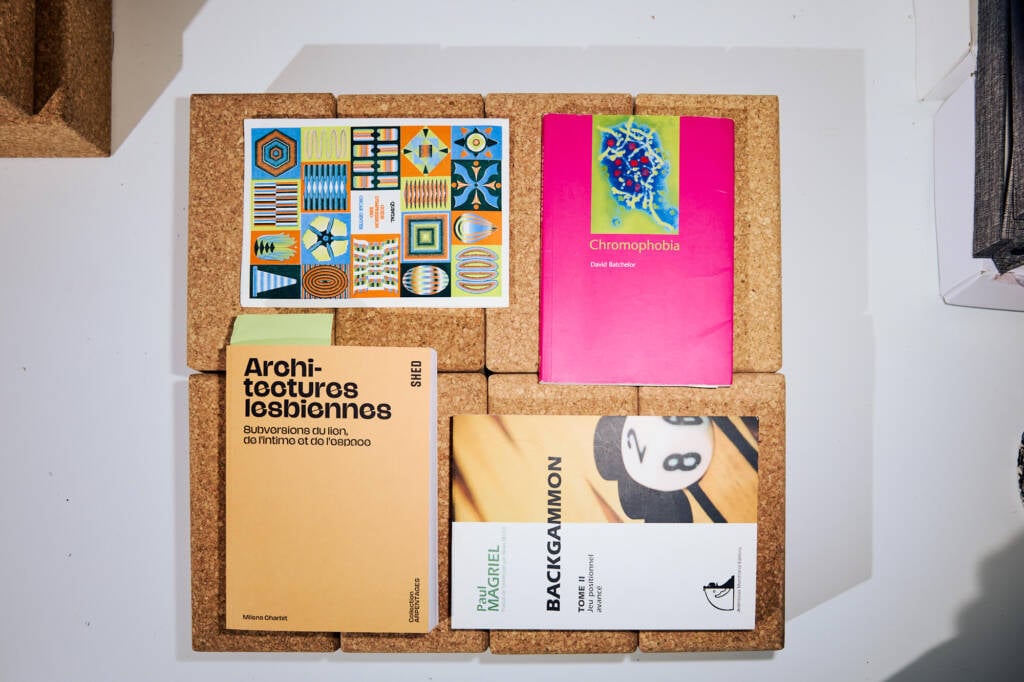
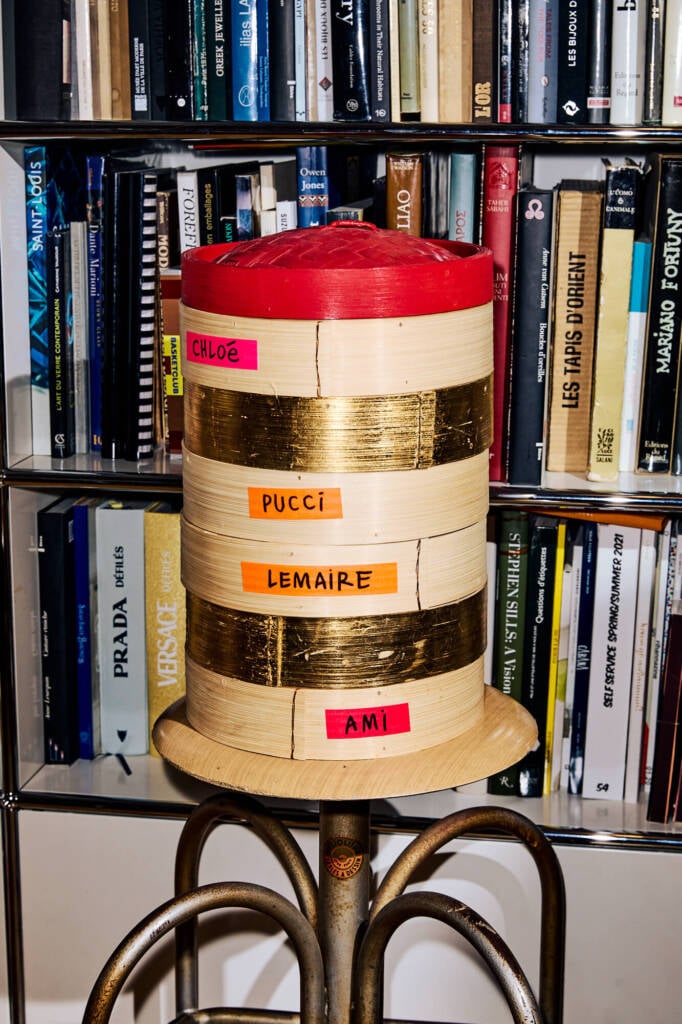
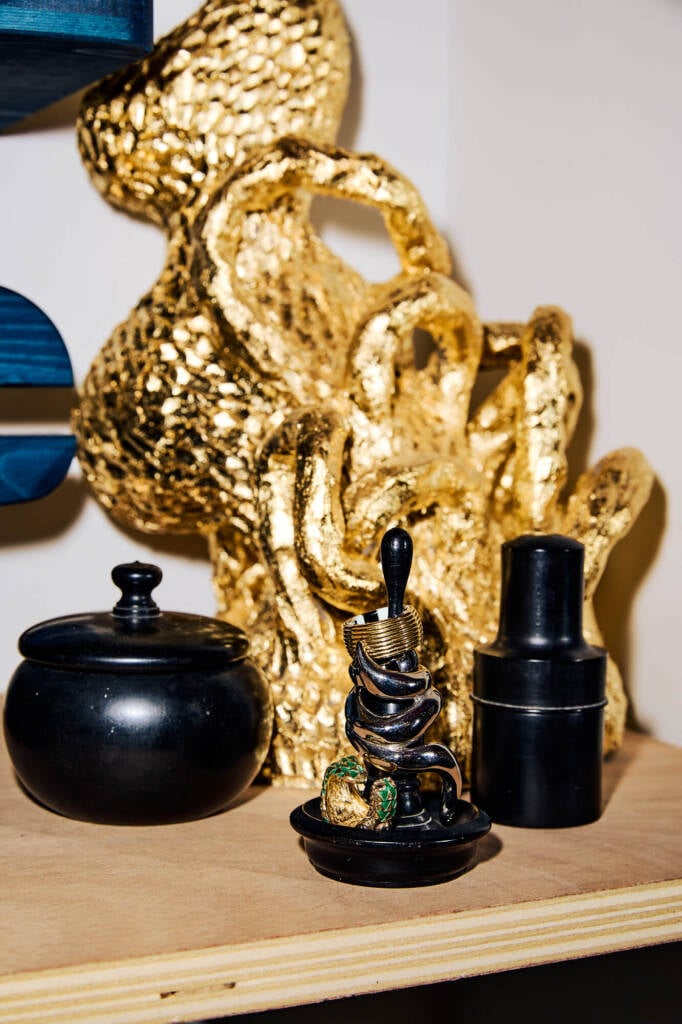
h: What does freedom look like to you—not as a concept, but as a lived, daily reality?
MVB: No alarm clock on a weekday. An open schedule, with no preset tasks, to welcome any unexpected whims—an uninterrupted creative flow that can last until the next morning. Being able to respect my natural creative rhythm, freelancing was the first step towards freedom I took that really made an impact on my life.
h: You’re often labeled a “multi-hyphenate.” Beyond the terminology, which mediums feel most essential to your identity as an artist—and which ones have surprised you in how they shaped your voice?
MVB: Drawing is the essence of how I communicate, but having a regular practice of ceramics really became necessary lately. It has helped me explore shapes and function in a more sensorial way; I needed to balance the automatism of the pen with a less structured reasoning. It’s a very ambivalent medium, though—satisfying because you get to see your thoughts become three-dimensional on the spot, yet very humbling; the risk of breaking the pieces in the process is so high you should never be too attached to a work. It is still teaching me patience every day.
h: Fashion loves to box people in. Did you ever feel pressured to choose a single role, and what was the turning point when you realized multiplicity was your strength rather than a liability?
MVB: Fashion has actually been quite understanding of my multi-skilled profile, even more so since I opened my practice in 2018. After I left a big job, already multitasking on different product categories at Louis Vuitton, I was hungry for a venture into home décor while keeping a foot in fashion. It’s under the umbrella of the word studio that I was able to advance my different interests without too much scrutiny. I had a beautiful creative relationship with Natacha Ramsay-Levi at Chloé, for example, that had me working on jewellery, scarves, but also prints for T-shirts, objects for show invites, illustrated communication materials, and even perfume campaigns.
h: Paris is both your backdrop and your heritage. Do you ever feel the need to escape its aesthetic codes in order to truly see yourself?
MVB: I don’t really consider myself a real Parisian; I was born there, but in terms of my aesthetic backdrop, I grew up in a library. Access to culture, curiosity, and a great set of friends will help you never feel trapped anywhere.
h: When you design accessories, do you consciously weave your personal style into them, or is there a kind of deliberate distance—almost like creating for a character outside yourself?
MVB: I don’t think you can really escape your style. It’s too ingrained in your hand when you draw; it comes out in a sense of proportions, lines, colour palettes. The game is to find resonance with the brand’s essence.
h: You work across paint, stone, metal, and more. Which material has resisted you most—and how has that resistance taught you something about yourself as a maker?
MVB: Metal is definitely one of my favourite sparring partners. I have learnt to surround myself with experts, whether it’s for milling or casting; a good, experienced team and curiosity about how things work will teach you anything. It made me aware of how passionate I am about the engineering side of my work.
h: If your work had a soundtrack, what mood or atmosphere would it conjure—chaos, serenity, seduction, dissonance?
MVB: I see music as colours, colours as emotions, and these days I am in warm nudes: it’s a calm, sexy playlist.
h: Has there been a creative figure whose influence unsettled you at first, but ultimately reshaped your artistic language?
MVB: Eileen Gray—I discovered her work through the very clean lines and highly functional tubular steel pieces, but getting deeper into her creations, I was blown away by the range of expressions she explored, favouring her taste over an obvious framed style.
Poesy over coherence is a very inspiring idea.



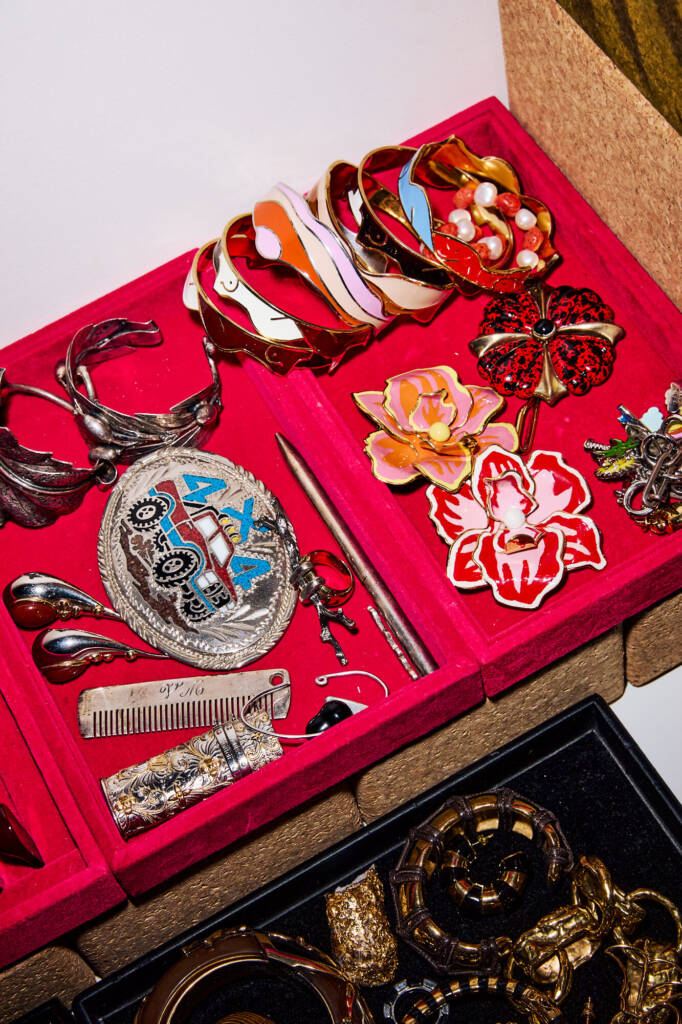
All images courtesy of MARIE-VICTOIRE DE BASCHER
Words: ISABELLA MICELI

